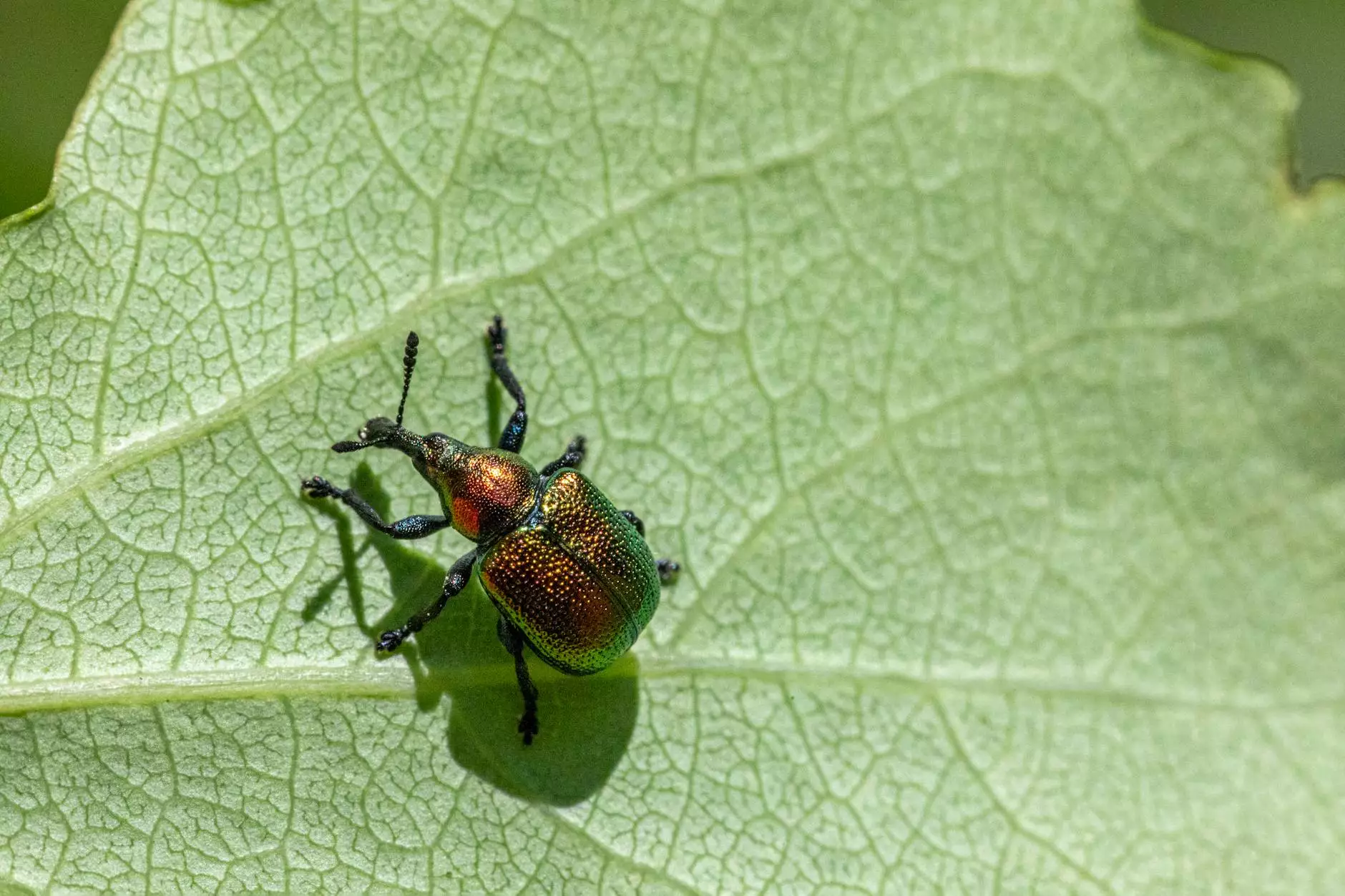Corn Weevil Control: Effective Strategies for Farmers

Corn weevils are a major threat to corn and other stored grains, causing significant damage to crops and impacting the livelihood of farmers. If you are involved in farming or grain storage, understanding how to control these pests is crucial for maintaining healthy yields and ensuring profitability. In this comprehensive guide, we will explore various corn weevil control measures that you can implement to safeguard your investment.
Understanding Corn Weevils
The corn weevil (Sitophilus zeamais) is a small beetle that is known for infesting stored corn. Weevils are particularly troublesome because their larvae feed internally on the kernels, leading to a decline in grain quality. Here are some key points to understand about corn weevils:
- Life Cycle: The life cycle of a corn weevil typically ranges from 30 to 45 days, depending on environmental conditions.
- Habitat: Corn weevils thrive in warm, humid conditions, making grain storage facilities particularly vulnerable.
- Feeding Behavior: Weevils bore into corn kernels, causing damage that can lead to mold growth and mycotoxin production.
The Importance of Corn Weevil Control
Effective corn weevil control is essential for several reasons:
- Preservation of Quality: Protecting your corn from weevil damage ensures the quality of the grain, which is critical for marketability.
- Prevention of Economic Loss: Infestations can lead to substantial financial losses due to decreased yield and quality.
- Food Safety: Controlling weevils helps prevent contamination of grain that could affect human health.
Effective Corn Weevil Control Measures
Farmers and grain storage managers can take several proactive measures to manage corn weevil populations effectively:
1. Sanitation Practices
Maintaining a clean storage environment is crucial for corn weevil control. Regularly inspect and clean storage facilities to remove any leftover grains or dust, which could harbor weevil eggs or larvae.
2. Proper Grain Storage
Ensure that corn is stored in airtight containers that minimize exposure to oxygen and humidity. This can significantly reduce the chances of weevil infestations.
3. Temperature Control
Controlling temperature in storage areas can also help prevent weevil activity. Store grain at temperatures below 60°F (15°C) whenever possible. Cold storage can slow or stop the development of weevils.
4. Monitoring and Detection
Regular monitoring of stored grains is essential. Use pheromone traps to detect corn weevil presence early, allowing for timely intervention.
5. Chemical Control Measures
In cases of severe infestations, the use of insecticides may be necessary. Always choose products specifically labeled for weevil control. Some commonly used insecticides include:
- Pyrethroids: Effective against adult weevils.
- Bacillus thuringiensis (Bt): A biological control that is safer for the environment.
- Grain Protectants: Products that can be applied during storage to prevent infestations.
6. Integrated Pest Management (IPM)
Utilizing an Integrated Pest Management approach allows for a combination of methods tailored to your specific situation. This includes:
- Biological Control: Introducing natural predators of corn weevils.
- Mechanical Control: Using vacuuming systems to remove weevils manually.
- Cultural Practices: Rotating crops and utilizing resistant varieties where possible.
Case Studies: Successful Corn Weevil Control
Examining real-world examples can provide valuable insights into effective corn weevil control strategies. Here are a couple of case studies:
Case Study 1: Family Farm in Iowa
A family-run farm in Iowa faced challenges with corn weevil infestations in their storage facility. They implemented comprehensive sanitation practices, ensuring that all equipment and storage areas were cleaned thoroughly. Additionally, they invested in temperature controls, setting their storage room to maintain a consistent cool temperature.
Through regular monitoring and the use of pheromone traps, they were able to identify early signs of infestation. When weevils were detected, they applied a grain protectant that was environmentally friendly and effective.
Case Study 2: Cooperative Grain Elevator in Kansas
In Kansas, a grain cooperative utilized an Integrated Pest Management approach. By mixing mechanical control techniques with biological options, they effectively reduced weevil populations. They also educated their members on proper grain handling and storage practices, leading to a noticeable decrease in infestation rates across their facility.
Future Trends in Corn Weevil Control
The agricultural sector is continuously evolving, and so are the practices for corn weevil control. Here are some future trends that might shape pest management strategies:
- Technology Integration: The use of smart sensors and IoT devices for real-time monitoring of grain conditions and pest presence.
- Biopesticides: Greater reliance on biological control methods that are safer to humans and the environment.
- Precision Agriculture: Using data analytics to optimize grain storage processes and pest control measures based on specific field conditions.
Conclusion
Effective corn weevil control is essential for farmers looking to protect their crops and ensure profitability. By implementing a combination of sanitation practices, monitoring methods, and chemical controls if necessary, you can significantly reduce the risk of infestations. As technology continues to advance, staying informed about the latest pest control strategies will be crucial for adapting your approach to changing agricultural challenges.
For high-quality farm equipment repair and expert advice on managing pests such as corn weevils, visit tsgcinc.com. Our team is dedicated to supporting farmers in achieving optimal crop yields and maintaining the integrity of their grain storage practices.



